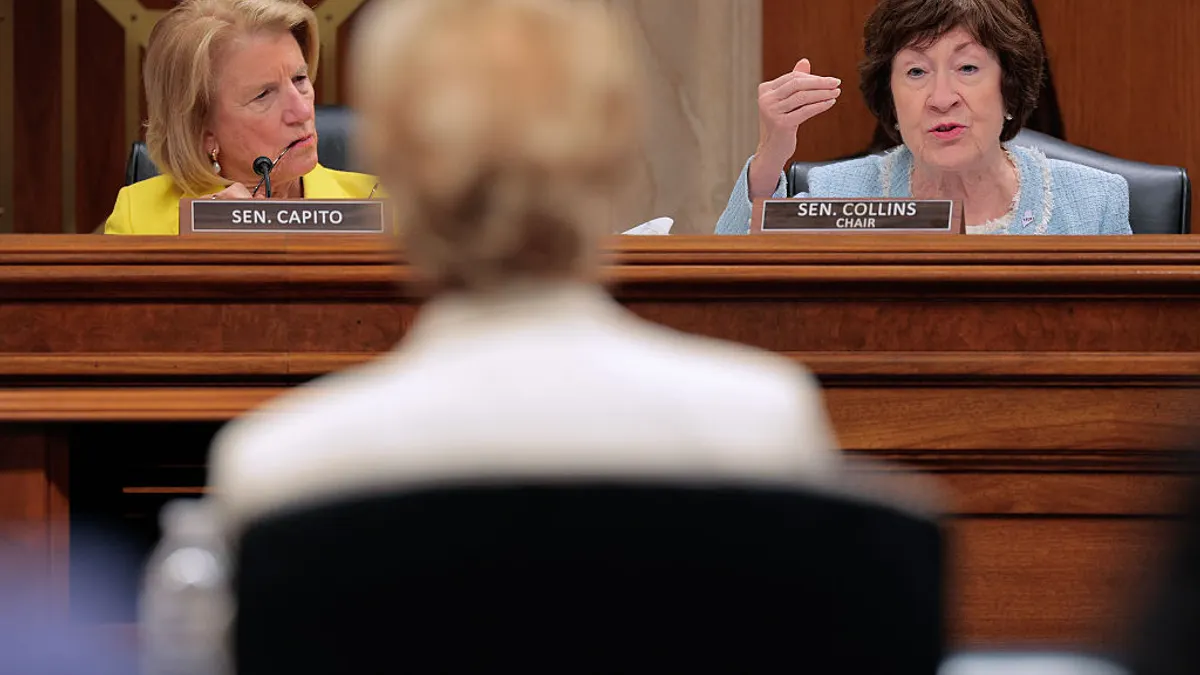The Texas Education Agency is giving school districts and charter schools a reprieve from potential loss of funding if they had low daily attendance rates earlier in the school year, according to a policy announcement last month.
The adjustment for funding purposes applies to just the first 24 weeks of the 2021-22 school year and does not hold districts harmless for lower average daily attendance rates (ADA) due to enrollment declines.
Other states have also altered policies that tie funding to attendance or enrollment in light of student and staff COVID-19 quarantines, staff shortages and other pandemic hardships. School finance and equity experts, however, warn such policy changes should emphasize the importance of consistent and equitable access to in-person instruction.
By October 2020 — six months after the start of the pandemic — 14 states had implemented hold-harmless provisions for funding purposes. Those approaches included changes to ADA policies, changes to state aid, supplemental funding to districts that experienced declining enrollment, and alternatives to school funding, according to a research brief from the Center for Public Education, an entity of the National School Boards Association.
As states look to adjust funding formulas that use attendance and enrollment calculations, some experts caution that incentives for school systems to keep students in school still need to be in place. Attendance Works, a nonprofit that seeks to close equity gaps by reducing chronic absenteeism, recommended during the pandemic that school systems use multiple attendance measures to help inform program and policy decisions.
The pandemic created alarming drops in student attendance and enrollment, school system leaders say. An April 2021 survey covering 565 school districts in 46 states from the American Institutes for Research showed 18% of districts reported daily attendance for all students to be substantially lower in fall 2020 than in fall 2019.
A student attendance analysis of 17 California school districts showed a chronic absenteeism rate of 27.4% in October 2021, compared to 18% in October 2020, and 11.2% in October 2019, according to research by School Innovations & Achievement, a company that provides programs to districts to reduce school absenteeism.
Drops in enrollment or attendance can hurt district budgets. A 5% loss in enrollment in Arizona's Mesa Public Schools in the 2020-21 school year could have caused a loss of $23 million, or about 4% of the district’s total revenue, without state intervention, according to a report from Edunomics Lab at Georgetown University.
TEA says its prioritizing flexibility
In Texas, the attendance adjustment is for districts that experienced attendance declines due to pandemic impacts and only applies to the first four six-week attendance reporting periods of this school year, or from the start of the school year through February, depending on a district's instructional calendar.
"Providing this adjustment to the 2021-22 school year will ensure school systems have the funding they need to retain the best and brightest teachers and provide quality education to all public school students across Texas," said Texas Gov. Greg Abbott in a statement.
The statement also said, "TEA has continued to prioritize flexibility to ensure essential funding support for school systems, by providing full funding based on daily attendance, whether the attendance was in-person or remote."
Texas Rep. Harold Dutton Jr., chair of the state House Public Education Committee, wrote in a March 7 letter to Abbott and Education Commissioner Mike Morath that some districts with low attendance either have to use federal relief funds to support their budgets or lay off staff in the middle of the school year.
Members of the Texas School Alliance are pleased with the policy, said Curtis Culwell, executive director of TSA, a school district member organization that comprises 44 school districts in Texas and educates 42% of the state’s total enrollment. Culwell said some district leaders wished the announcement was made earlier in the school year.
"When your average daily attendance goes down, your funding goes down," Culwell said. "This is ADA support for a mechanism so you wouldn't lose money, because the pandemic this year impacted so many school-aged kids."
Some Texas school systems, particularly smaller districts, had to close temporarily because of staffing shortages in the fall, Culwell said.
He said although a minimum of 75,600 minutes of operational minutes per year is required by the state, many school systems go beyond that by building in extra time per day or additional days in their school calendars to anticipate unexpected closures. It was no surprise that the state was going to hold districts accountable for providing the minimum number of instructional minutes over the entire school year even as it made adjustments for the fall and winter periods, Culwell said.
"I think the conversation around this issue has been robust, and I think that the Texas Education Agency had a very honest dialogue about what's going on during the course of this whole school year," Culwell said.




















